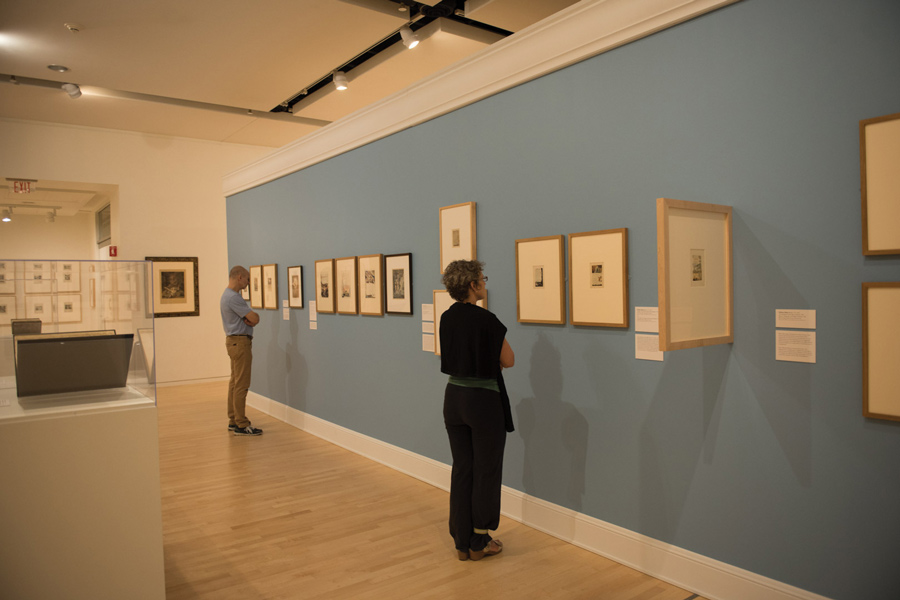New Block Museum exhibition combines 18th century, contemporary art
(Katie Pach/Senior Daily Staffer)
The Block Museum of Art’s new exhibit, “William Blake and the Age of Aquarius” features the artist’s work and explores his influence on contemporary creators.
September 27, 2017
The Block Museum of Art is reviving the legacy of William Blake in an interdisciplinary exhibition that draws parallels between the artist’s work during the Romantic era and pieces he inspired modern artists to create.
Titled “William Blake and the Age of Aquarius,” the exhibition opened Saturday in the Main Gallery and will run until March 2018. It showcases many of Blake’s works, as well as posters, paintings, photography and prints from artists like Jackson Pollock and Allen Ginsberg, for whom Blake’s work was a catalyst. “Age of Aquarius” refers to hippie culture that culminated during the 1940s through the 1960s, Block director Lisa Graziose Corrin said.
The main goal of the exhibition is to encourage independent thinking among Northwestern students, Corrin said.
As a university art museum, it was important to the curators that the exhibition have educational value, said Corinne Granof, who serves as the Block’s curator of academic programs.
Granof said the Block’s exhibition is unique because of the way it includes both Blake’s work as well as later artists whose works he influenced.
“There had been no real substantial project that looked at William Blake and other artists,” she said. “Most of our exhibitions, they’re very steeped in ideas and representing a cultural moment, so I feel like it very much reinforces our mission as a university museum.”
Largely unrecognized during his time, Blake was an English poet, printer and painter during the Romantic era, said art history Prof. Stephen Eisenman, the exhibition’s curator. His work is known for its message of rebellion and political themes.
“It’s an exhibition about the making of art history itself, the making of criticism itself, but in this case the particular juxtaposition has been made,” Eisenman said. “It’s one that’s very purposeful, because the artists of the generation of the 1940s through the 60s particularly looked back to Blake because they saw him as a model.”
Eisenman said artists of the contemporary era were inspired by Blake’s rejection of notions like violence, greed, authoritarianism and sexual exploitation. Blake also supported women’s freedom to express themselves sexually, Eisenman said.
Corrin said students should be inspired by Blake’s independent thinking and not be afraid to have unconventional views.
“It’s extremely important for our students to feel that they can be not only original as people but independent in their thinking,” she said. “There is no better model out there than William Blake, who was an outsider with political views that were on the cutting edge of the thinking of his own time.”
Corrin added that though Eisenman had thought of a Blake exhibition before she joined the Block staff, the gallery is especially timely now due to the turbulent political climate.
“I’m really glad that an art museum can present an exhibition that is so relevant (and) give our students so much food for thought and hopefully nourish their ideals,” Corrin said.
Email: [email protected]
Twitter: @_janeyun


